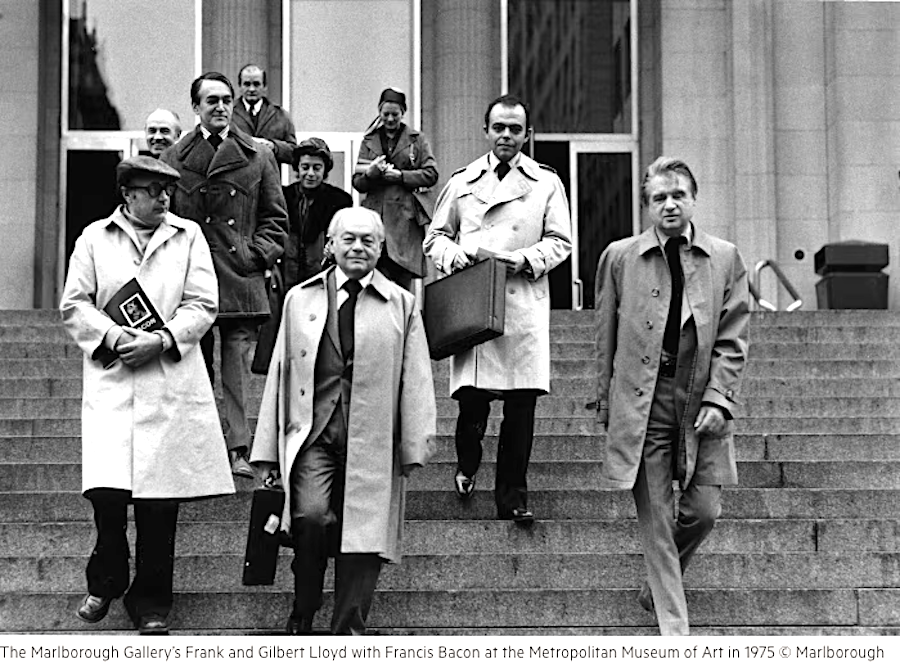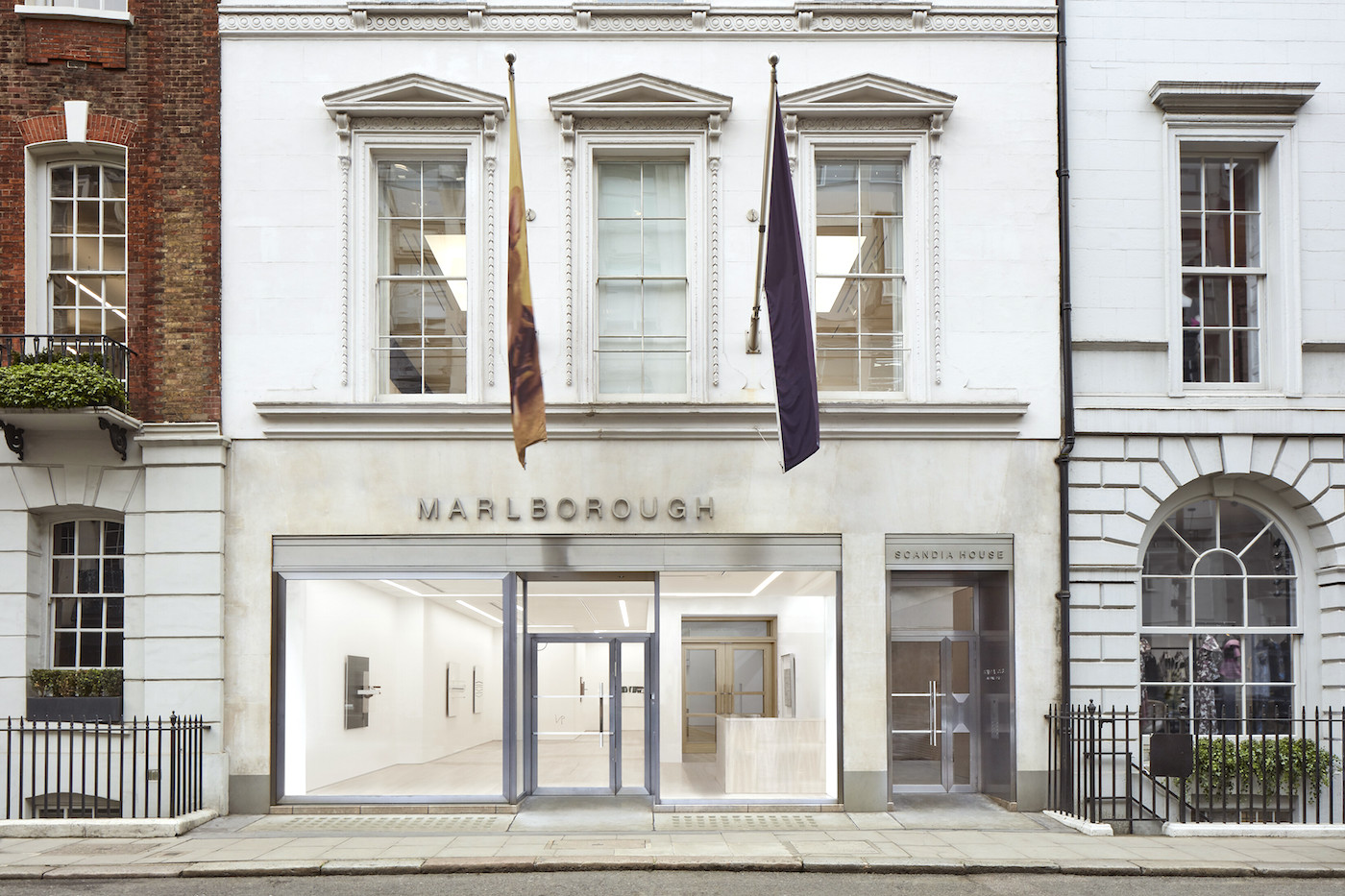Marlborough Gallery, a stalwart in the post-war era, has announced the closure of its prestigious galleries in New York, London, Madrid, and Barcelona. This decision marks the end of a chapter spanning nearly eight decades. It comes amid a backdrop of leadership turmoil and financial uncertainty within the venerable institution, signalling a shift in the art world landscape. Marlborough was once at the top of the gallery pecking order, but lately, it has looked a bit pallid against the Gagosian and Hauser & Wirth mega-chains.
Founded in London in 1946 by Frank Lloyd, a Jewish immigrant, and Harry Fischer, an Austrian rare books dealer, Marlborough Gallery quickly ascended to prominence as a leader of avant-garde expression, representing leading artists such as Francis Bacon, Lucian Freud, and the Jackson Pollock and Rothko estates, the gallery became synonymous with groundbreaking artistic innovation on both sides of the Atlantic.
Marlborough has recently been embroiled in a web of internal conflicts and financial challenges. Reports emerged in June 2020 of a bitter family feud between Gilbert Lloyd, Frank Lloyd’s son, and Pierre Levai, Frank’s nephew and longtime manager of the New York gallery. Lawsuits filed by both parties revealed staggering financial losses totalling $18.7 million between 2013 and 2019, casting a shadow over the gallery’s future.
The root of these disputes was in Marlborough’s ambitious expansion plans, which included acquiring the former Cheim & Reid (later Blain|Southern) building adjacent to its New York premises. However, the gallery’s board voted down the plans, leading to internal discord.

Despite efforts to resolve the conflicts and settle lawsuits, Marlborough Gallery’s financial woes persisted. UK Companies House filings for 2022 revealed a steep decline in turnover and gross profits, exacerbated by the departure of critical directors and artists. The gallery’s London operations saw turnover plummet by 35%, reflecting a turbulent period of instability and uncertainty.
In a statement released by the gallery, Franz Plutschow, a member of the Board of Trustees and long-time associate of the gallery’s founders, said, “After long and careful consideration, we decided that now is the time to sunset our nearly 80-year-old firm. We are profoundly grateful to all the artists who have been at the heart of Marlborough Gallery and integral to its storied legacy. We are indebted to our expert and dedicated employees, including those who will continue working with us as we wind down the business. As we do so, we are mindful that our inventory’s extraordinary breadth and depth testifies to the relationships formed over the decades with some of the most important artists of the modern era.”
Marlborough Gallery’s closure signals the end of an era for a business model that never had a high profile at big art fairs. The gallery’s extensive inventory, amassed over decades and estimated to be worth over $250 million, will be dispersed in the coming months and years. What will happen to its Albermarle Street premises and other properties owned by the institution in the future is a big question; with uncertainty surrounding ownership and ongoing negotiations for potential sales, the fate of these spaces hangs in the balance, a reminder of the longevity of any family-run gallery. Its closure underscores the industry’s broader issues, from navigating familial conflicts to the perils of overexpansion and financial instability. .
Marlborough Fine Arts represented diverse artists who significantly contributed to art history, including:
Ad Reinhardt, Alexander Rodchenko, Barbara Hepworth, Ben Nicholson, Clyfford Still, David Smith, Edward Hopper, Francis Bacon, Philip Guston, Franz Kline, Frank Auerbach, Henry Moore, Jackson Pollock, Kazimir Malevich, Lucian Freud, Lyubov Popova, Marc Chagall, Mark Rothko, Olga Rozanova, Oskar Kokoschka, Paula Rego, Richard Diebenkorn, Robert Motherwell, Wassily Kandinsky
Over the years, the gallery has had its tussle with controversy. The Rothko estate scandal involving Marlborough Fine Arts was a low benchmark in the art world’s annals, marked by intrigue, legal battles, and financial improprieties. At the centre of this scandal were the renowned abstract expressionist painter Mark Rothko and his estate’s dealings with Marlborough Fine Arts Gallery, one of the world’s leading dealers in post-war art.
Rothko celebrated for his expressive and profound paintings, entrusted the representation of his estate to Marlborough Fine Arts Gallery. The gallery had garnered a reputation for championing prominent artists such as Francis Bacon, Lucian Freud, and Jackson Pollock. However, the relationship between Rothko’s estate and Marlborough became contentious, leading to lawsuits.
The scandal erupted amid allegations of financial misconduct and exploitation by Marlborough Fine Arts Gallery. It was revealed that the gallery had engaged in unethical practices, including price manipulation, unauthorised reproductions, and sales misrepresentation. These actions compromised the integrity of Rothko’s estate and raised serious questions about the gallery’s ethical standards and fiduciary responsibilities.
One of the most egregious aspects of the scandal was Marlborough’s alleged role in undervaluing Rothko’s artworks to minimise estate taxes. This practice, known as “deathbed valuations,” allowed the gallery to acquire valuable pieces at deflated prices and subsequently sell them at significant profits. Such actions not only deprived the estate of its rightful value but also betrayed the artist’s trust and legacy.
The Rothko estate scandal prompted a series of legal battles and investigations, with allegations of fraud and breach of fiduciary duty levied against Marlborough Fine Arts. The gallery’s reputation suffered a severe blow as the scandal unfolded, tarnishing its standing within the art world and eroding public trust.
Following the scandal, Marlborough Fine Arts Gallery faced mounting scrutiny from regulators and the art community. The gallery’s leadership was forced to reckon with the fallout, implementing reforms and transparency measures to address the misconduct allegations. However, the damage had been done, and the Rothko estate scandal summed up the perils of unchecked greed in the art market.
Ultimately, the Rothko estate scandal overshadowed Marlborough Fine Arts and underscored the need for greater oversight and accountability in handling artists’ legacies. It served as a wake-up call for the art world, prompting renewed efforts to safeguard the rights and interests of artists and their estates in an industry often fraught with complexities and challenges.
The current version of Marlborough never seemed to have a distinct curatorial direction. The legacy artists were always far more interesting than the contemporary programs, and the gallery was no longer seen as a place for discovering exciting new contemporary art.

